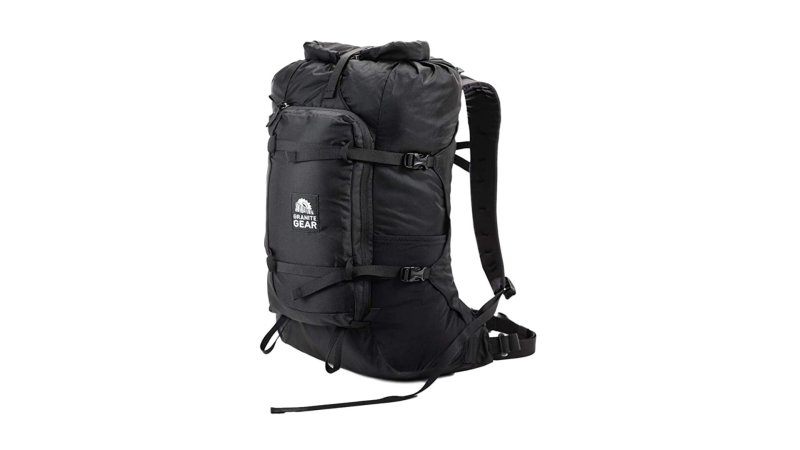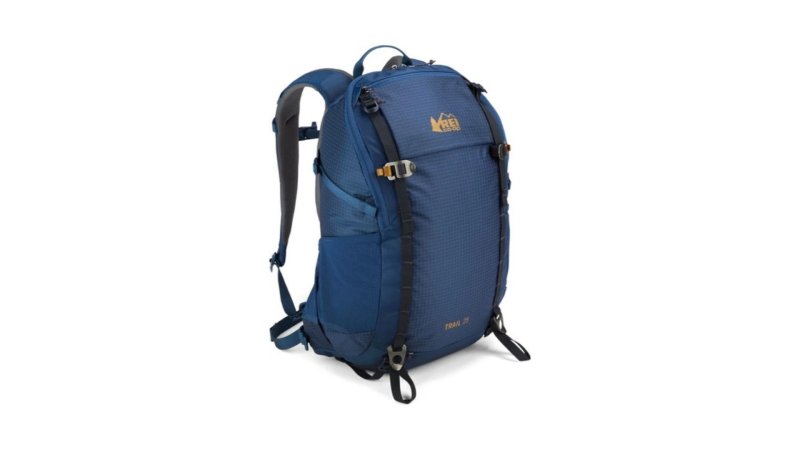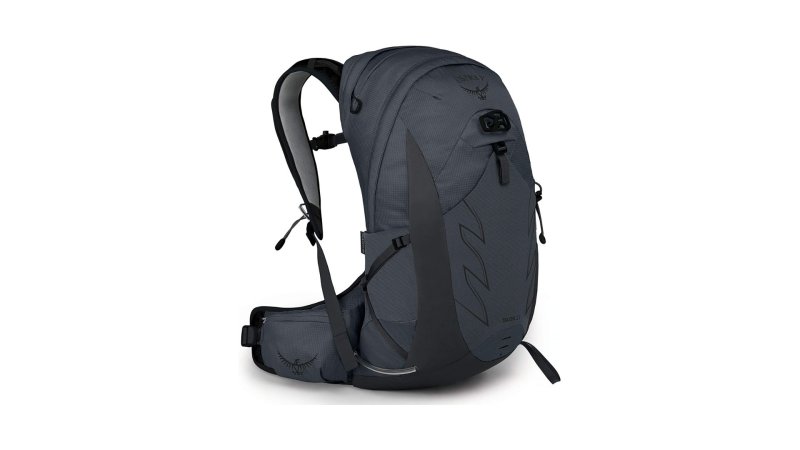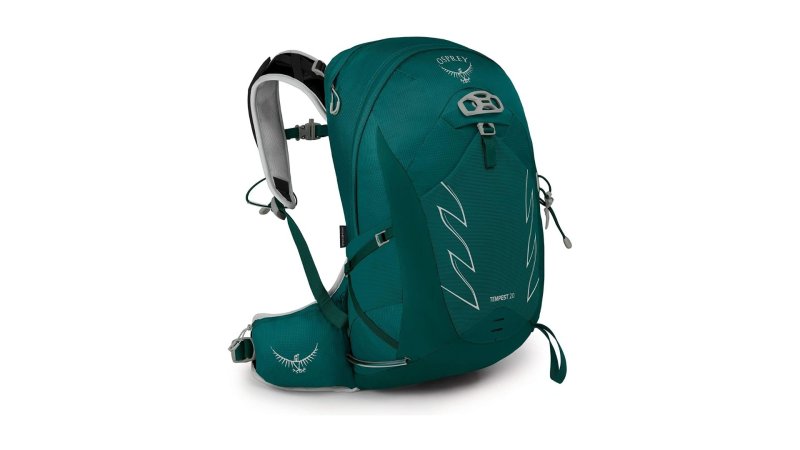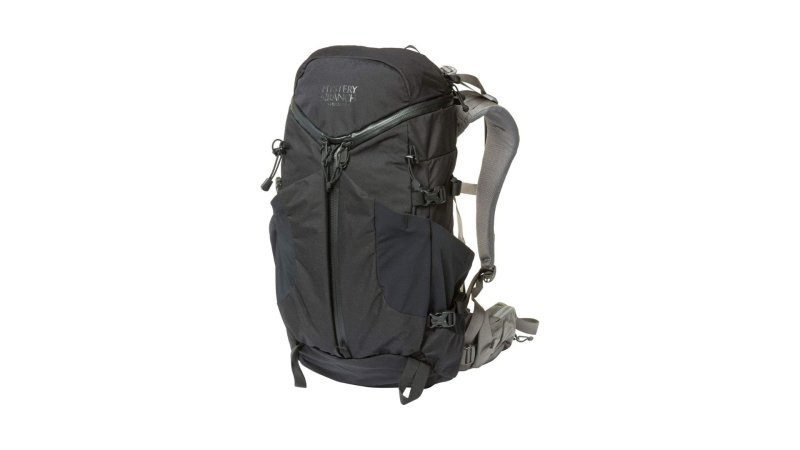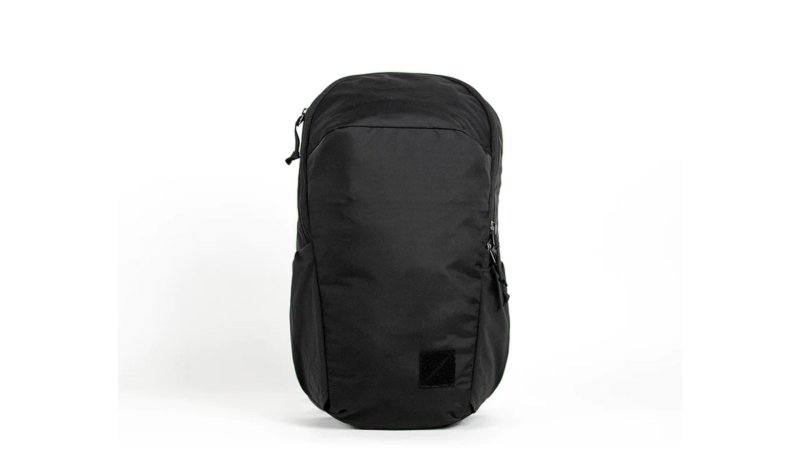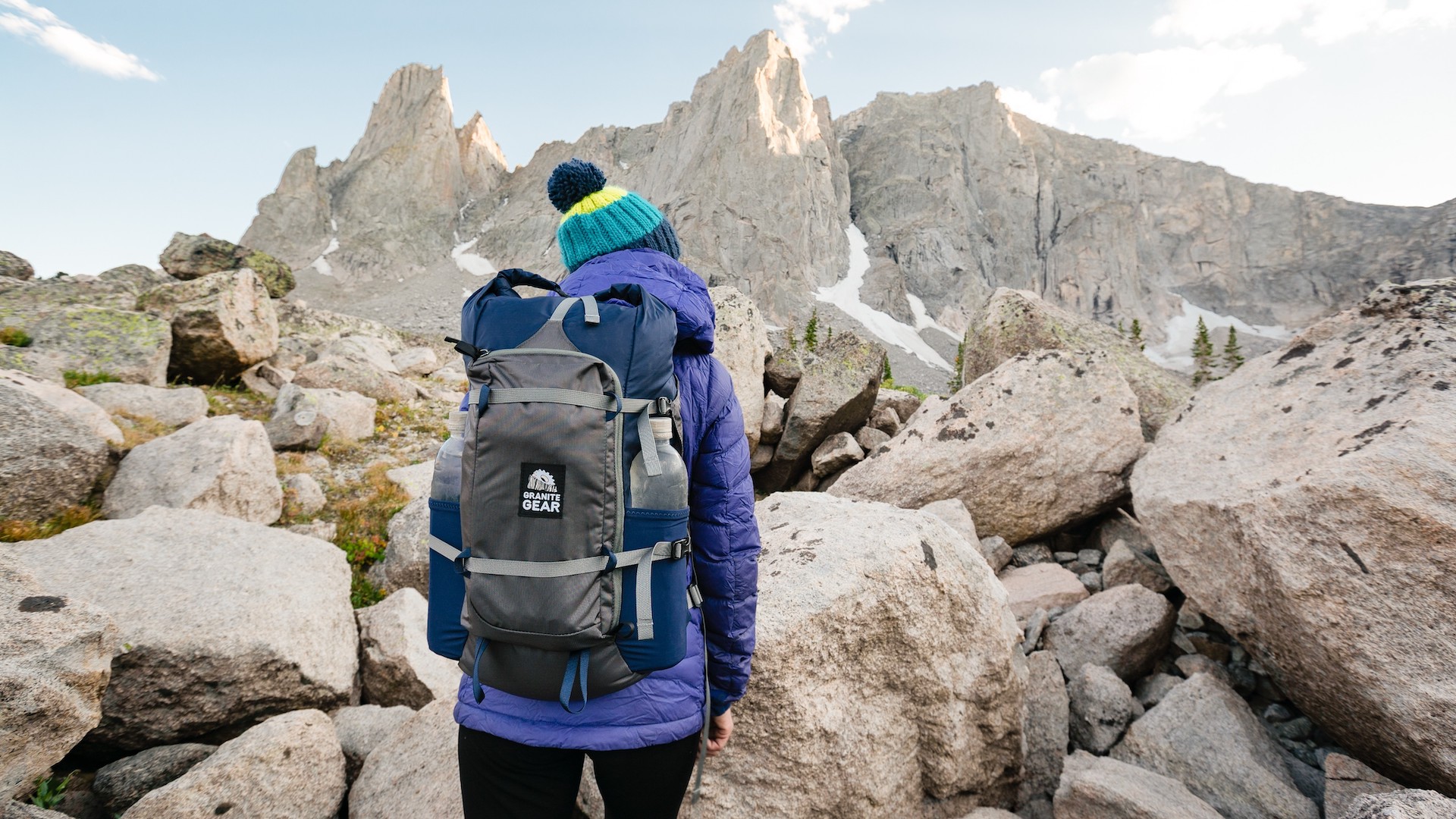

We may earn revenue from the products available on this page and participate in affiliate programs.
There are basically three options for carrying your gear when venturing off the beaten path: a fanny pack, a sling bag, and a daypack. The team at Task & Purpose has used all of these options, and hands-down, the daypack is the best choice for versatility, comfort, capacity, and convenience. A quality daypack in the 15- to 25-liter range will hold all of your water, food, raingear, spare clothing, and survival essentials for the day without weighing you down. Let’s get started.
- Best Overall: Granite Gear Scurry 24L
- Best Value: REI Co-op Trail 25L
- Editor’s Choice: Osprey Talon 22L
- Best for Women: Osprey Tempest 20L
- Best for Heavy Loads: Mystery Ranch Coulee 25L
- Best Crossover Daypack: Evergoods Civic Half Zip 22L
Best Overall
Granite Gear Scurry 24L
Pros
- Lightweight
- Comfortable high-density foam frame sheet and shoulder straps
Cons
- Limited organization features
Product Specs
- Volume: 24 liters
- Max load: 20 pounds
- Dimensions: 18 X 13 X 7 inches
- Weight: 1.1 pounds
- Material: Robic high-tenacity nylon (100D and custom 210D)
- Style: Unisex
Why It Made The Cut
- The Granite Gear Scurry 24L imbues the company’s proven pedigree of renowned expedition backpacks into a featherweight package suitable for day-hiking and off-trail jaunts.
Best Value
REI Co-op Trail 25L
Pros
- Multiple pockets for organization
- Well-padded shoulder straps
- Competitively priced
Cons
- Waist strap is of minimal use
Product Specs
- Volume: 25 liters
- Max load: Not specified
- Dimensions: 19.5 x 13.25 x 7.5 inches
- Weight: 2 pounds
- Material: Recycled nylon (bluesign-approved)
- Style: Men’s and women’s
Why It Made The Cut
- The Trail 25 daypack incorporates some of the best features from other manufacturers in a rugged, lightweight daypack at an affordable price for budget-conscious shoppers.
Editor’s Choice
Osprey Talon 22L
Pros
- Breathable back panel and comfortable, ergonomic suspension system
- Wrap-around hip belt with built-in pockets
- Multiple pockets for excellent organization
- Trekking pole attachments on the back and shoulder straps
Cons
- Expensive
Product Specs
- Volume: 20 liters (S/M), 22 liters (L/XL)
- Max load: 20 pounds
- Dimensions: 20 x 9.8 x 9.1 inches (S/M), 22 x 9.8 x 9.1 inches (L/XL)
- Weight: 1.9 pounds (S/M), 2 pounds (L/XL)
- Material: 100D x 210D wave check high-tenacity nylon + 410HD nylon on bottom and accent areas, bluesign-approved
- Style: Men’s
Why It Made The Cut
- While it may be expensive, the Osprey Talon 22L’s AirSpace back panel and suspension system offers incredible comfort and breathability under all weather conditions and most activities.
Best for Women
Osprey Tempest 20L
Pros
- Breathable back panel and comfortable, ergonomic suspension system
- Wrap-around hip belt with built-in pockets
- Multiple pockets for excellent organization
- Trekking pole attachments on the back and shoulder straps
Cons
- Expensive
Product Specs
- Volume: 18 liters (XS/S), 20 liters (M/L)
- Max load: 20 pounds
- Dimensions: 18.1 x 10.6 x 9.1 inches (XS/S), 20 x 10.6 x 9.1 inches (M/L)
- Weight: 2 pounds (XS/S), 2.2 pounds (M/L)
- Material: 100D x 210D wave check high-tenacity nylon + 410HD nylon on the bottom and accent areas, bluesign-approved
- Style: Women’s
Why It Made The Cut
- Strong enough for a man but made for a woman, the Tempest 20 combines all the features of the Talon 22 in a female-friendly package.
Best for Heavy Loads
Mystery Ranch Coulee 25L
Pros
- Robust suspension system
- 3-ZIP design provides easy access
- Removable hip belt
Cons
- Expensive
- Heavy
Product Specs
- Volume: 25 liters
- Max load: Not specified
- Dimensions: 22 x 10.5 x 12 inches
- Weight: 2.9 pounds
- Material: Robic high-tenacity nylon 330D
- Style: Unisex
Why It Made The Cut
- With tactical chops, a low-key style, a generous 25 liters of storage, and a robust suspension system, the Mystery Ranch Coulee has your six.
Best Hybrid Daypack
Evergoods Civic Half Zip 22L
Pros
- Durable materials
- Fantastic ergonomics
Cons
- Expensive
Product Specs
- Volume: 22 liters
- Max load: Not specified
- Dimensions: 18 X 8 X 11 inches
- Weight: 2.25 pounds
- Material: 500D high-tenacity nylon 6,6 with air-textured yarn and water-repellent finish
- Style: Unisex
Why It Made The Cut
- The Civic Half Zip is tough, ergonomic, and functional for both hiking trails and urban canyons. It blurs the line well, making it an ideal dual-purpose pack.
Things to consider before buying a daypack
Capacity
We’ve all been there — that first hike in a national park in some far-away mountain state. Your packing list grows as you think through everything that “could happen:” GPS, ham radio, hand ax, two MREs, space blanket, tent stakes, six-pound first aid kit, etc. But unless you’re going off-trail or trekking through big bear country, the reality of the situation is that you can get by with far less gear.
With that in mind, all of the daypacks listed above are in the 15- to 25-liter capacity. Admittedly, the low end of that range is a bit tight but still potentially viable depending on the season, weather, terrain, and your personal knowledge of bushcraft and wilderness survival. The sweet spot is right at 20 liters, which should accommodate virtually every scenario. A 25-liter pack would be a good choice when conditions are such that you may need extra clothing or when carrying special equipment like a DSLR camera and telephoto lenses.
From a load-bearing standpoint, a hiking daypack should be rated for around 20 pounds. This ensures that the padding on the back panel and shoulder straps are sufficient for a comfortable carry, even though most of the time you shouldn’t be hauling that much weight.
Weight
The empty weight should be under two pounds. It’s possible to find daypacks that weigh less than one pound, but check the comfort and fit before venturing far afield as such packs generally lack sufficient padding.
Fit
Since the hip belt on most daypacks is insufficient to transfer much of the load to your hips, you’ll be carrying the weight on your shoulders, which affects both the desired fit and your personal comfort level as pack weight increases. Look for a daypack that carries high and close on your back rucksack-style. Your pack should not extend below your belt line either — this can be addressed with adjustable suspension systems on higher-end packs or by selecting a pack with a fixed suspension that correctly matches your torso length.
Price
Expect to spend around $100 on a quality hiking daypack. There are options in the $50 to $75 range, but these packs generally lack sufficient structure (frame sheet and shoulder padding) to properly carry your load and/or use materials that are both less expensive and heavier by design. Buy once, cry once, and choose a quality brand that is lightweight and comfortable.
FAQs about hiking daypacks
Q: What should I look for when buying a hiking daypack?
A: Your priority is to decide on an appropriate capacity for your daypack — anything over 25 liters will tempt you to carry far too much gear for a simple dayhike. Beyond that, look for the features (design, pockets, attachment points) that best fit your use case, recognizing that features generally equate to added weight.
Q: What is the difference between a backpack and a daypack?
A: The main difference is primarily volume, with daypacks topping out at around 35 liters and backpacks going up to 90 liters or more. Backpacks are designed for multi-day or multi-night excursions and have additional features for carrying or attaching gear that isn’t necessary for day-hiking (e.g., bear canisters).
Q: What should be in a daypack for hiking?
A: Water sufficient for your use with filtration and purification capabilities in case of unexpected delays, food as desired, extra clothing, rain gear if appropriate, map, compass, and either the “10 Essentials” or the “10 C’s of Survivability” (parts 1 and 2), depending on your experience in the backcountry and knowledge of the area.
Final thoughts
Any of the daypacks above are outstanding choices, with some better for heavier loads and others for moving fast and light. Keep the reality of your use case in mind — you’re hiking, not backpacking — so only take what you truly need, and you’ll have a much more enjoyable time out on the trail.
Methodology
In this article, we recommend the best daypacks for hiking in the field. Our selections are based on personal experience with many different brands over many miles of trails, as well as extensive research of the manufacturer’s specifications, professional publications, product videos, and other sources.
Our research started with identifying the key characteristics essential to the performance of a quality daypack, namely capacity, weight, and fit. These characteristics are discussed above in the section “Things to consider before buying a daypack.”
We then searched for daypacks on e-commerce websites including Amazon, REI, Cabela’s, Backcountry, Campmor, and others, with a focus on selecting those products that offer an optimal balance between design characteristics. The most promising daypacks were then selected for in-depth research via consumer and independent third-party print and video reviews, as well as discussions within the Task & Purpose community.
The final research step leveraged all the data, results, and commentary to develop specific questions for each manufacturer. The answers provided by the manufacturers gave us a better understanding of each daypack’s performance and helped us develop our final set of recommendations.
It is of the utmost importance to those of us at Task & Purpose to ensure that you, our readers, know our commitment to fair and open product reviews and recommendations so that you can trust us to provide you with unbiased, balanced information.
